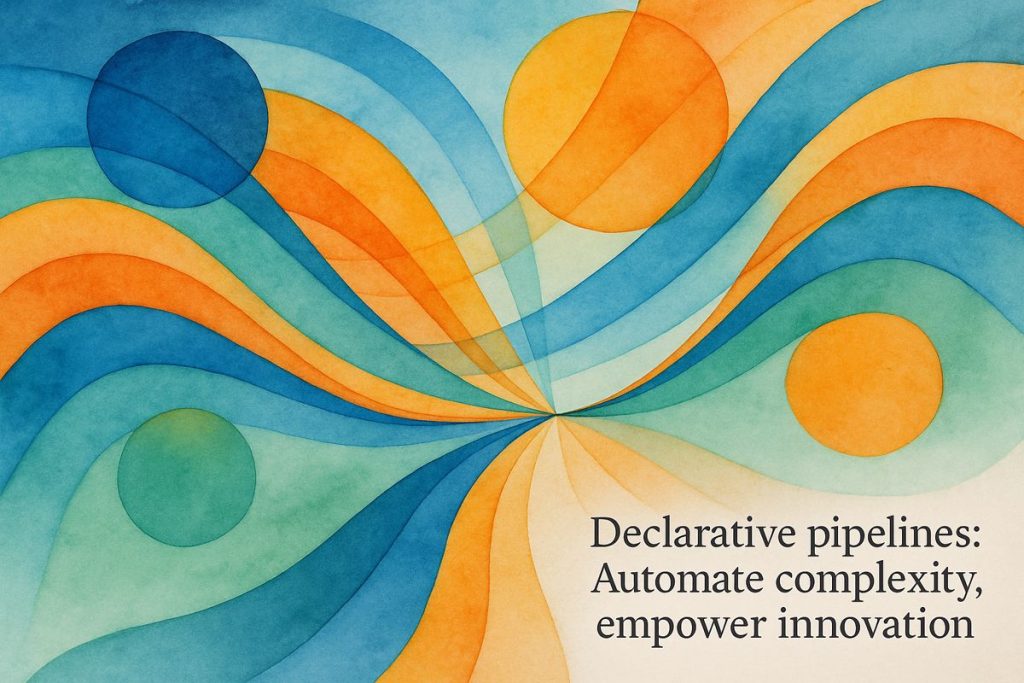Databricks has introduced Apache Spark Declarative Pipelines, letting engineers say what they want done with data, instead of explaining how to do it. This makes building data pipelines faster, easier, and less error-prone, like making a perfect cup of coffee by just pressing a button. The new system cuts way down on code, automates tricky parts like error handling, and only processes new data, which saves time and money. Best of all, Databricks made this tool open-source, so anyone can use it or build on it, making the whole data world buzz with excitement.
What are Apache Spark Declarative Pipelines and why are they important for data engineering?
Apache Spark Declarative Pipelines, introduced by Databricks, let engineers define data workflows by specifying what should happen, not how. This simplifies pipeline creation, reduces code, automates errors and dependencies, supports batch and streaming, enables efficient incremental processing, and is now open-source within the Spark ecosystem.
A Scent of Revolution in the Air
Let’s set the scene: I’m hunched over a chipped mug, steam curling into the morning air, when it lands—Databricks, that perennial headline-grabber of the data universe, has just lobbed Apache Spark Declarative Pipelines into the open-source ring. It’s not hyperbole to call this a paradigm shift (though, admittedly, I once called Kubernetes “the wheel reinvented” and lived to regret it). But this really is different. The news comes not as a whisper but more as the invigorating hiss of freshly ground beans—unmistakable, and, for data engineers, impossible to ignore.
Databricks, if you’ve somehow missed their meteoric ascent, is already the steward behind heavy hitters like Delta Lake and MLflow. Yet this announcement, documented in detail on the Databricks Blog, jolts the senses. Why? Because it promises to make pipeline engineering as declarative—and dare I say, as satisfying—as configuring your favorite home espresso machine. Vague? Not for long.
Why Declarative? A Pragmatist’s Daydream
If you’ve wrangled Spark code before, you know the pain: imperative logic twisting like a Gordian knot, with error handling lurking in every corner like the last stubborn grounds at the bottom of the cup. Declarative Pipelines flip this script. Instead of telling Spark precisely how to grind, tamp, and brew, you simply declare what you want: these datasets, flowing through those transformations, ending up right where you need them. It’s as if someone handed you the secret recipe for a flawless cappuccino—no guesswork, just results.
Michael Armbrust—whose name should be familiar if you’ve ever uttered “Spark SQL” or “Delta Lake” in mixed company—sums it up well: “You declare a series of datasets and data flows, and Apache [Spark handles the execution]” (Databricks Blog). I once tried to hand-code a multi-branch workflow for daily CDC processing; let’s just say, the codebase ballooned to 2,000 lines, and my patience evaporated faster than crema in the sun. The declarative approach? It’s more like drawing a map than hacking through the jungle.
But here’s the rub—can this abstraction really deliver? I had to stop and ask myself: Am I just dazzled by shiny new syntax, or is this the rare tool that actually slashes toil? Skepticism simmered, then gave way to cautious optimism.
Pipes, Not Parrots: The Tangibles
Now, let’s grind down to brass tacks. Spark Declarative Pipelines aren’t just marketing froth; their feature list is caffeinated with concrete improvements. For one, the declarative API means you can define an end-to-end data pipeline in maybe a tenth of the code you’d normally write (Hinge Health Delta Live Tables). The system orchestrates dependencies automatically, like a conductor wielding a hyperspectral baton—batch, streaming, whatever’s required.
And the error handling? Gone are the days of bespoke retry logic. Pipelines will be auto-retried with granular smarts—a feature that once would’ve saved me hours of squinting at logfiles, listening to the low, mournful beep of a failing cron job (Microsoft Azure Documentation). Oh, and the incremental processing is the real espresso shot: only new or updated data is touched. For those of us who’ve watched a 500GB table grind through a full reprocess (ugh), this is nothing short of transformative. As Microsoft Azure Documentation notes, latency and compute costs plummet, and you can finally stop rationing cluster time like it’s Soviet-era sugar.
Have I mentioned the AUTO CDC API? It’s like someone slipped a SCD Type 2 driver under the hood—change data capture and history tracking, all streamlined. The Lakeflow docs explain how this untangles what was, until now, a thicket of custom code. The difference is palpable, almost as if the air itself feels lighter.
The Fragrant Whiff of Open Source (and the Wider World)
Here’s where the story gets that extra twist of lime: Databricks isn’t keeping this goodness locked behind a logo. Instead, they’re donating the whole Declarative ETL framework to the Apache Spark project—a move announced with the classic bravado of a PR Newswire blast. The implications? No vendor lock-in; partners and even rivals can build atop this palimpsest. True, there’s always a danger when you let the world take a sip from your cup, but that’s the open-source contract—messy, exhilarating, and, at its best, wildly generative.
Already, thousands of organizations have run Declarative Pipelines in production—Databricks claims, anyway. Maybe that’s the number that counts. It’s a proof point as solid as the click of a portafilter in a busy café. The broader ecosystem—AWS, Azure, and the wider Apache Spark community—gets to join the
